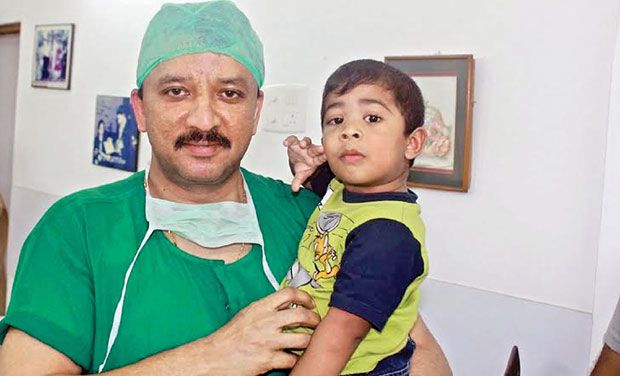
Chennai:
Many of his surgeries are first-of-its kind and he is the doctor who introduced the latest technological advancements in reconstruction of facial defects to the city.
Director of Balaji Dental and Craniofacial Hospital at Teynampet and famous facio-maxillary surgeon Dr S.M. Balaji, says more specialists are needed in this particular field. Noted for making a great difference to the confidence and life of his patients, Dr Balaji is known for some of the most dynamic innovations in his field of specialty. In an interview to Deccan Chronicle, Dr Balaji explains how patients with jaw defects can expect to be completely normal people after surgery.
Excerpts from the interview:
Q) You are a pioneer in applying latest technology of tissue engineering. Can you explain the recent developments in the field?
A) Earlier, we used to remove the tumour of the jaw and take the bone from the hip or the leg and do a microvascular surgery for reconstruction of the jaw. It used to be a long procedure as it would go on for 10-12 hours. Also, anaesthesia is prolonged and the scar is so visible in the leg.
Now you can take the abdominal fat to reconstruct the jaw. Adipose stem cells present in the fat have inherent ability to grow into other tissues like bone, cartilage and tendons. People do liposuction and throw away the fat but it can be utilised. Since this technique is new, so far only three patients have undergone the reconstruction using abdominal fat.
Q) What kinds of defects are seen?
A) If somebody meets with an accident, a part of the bone, say, in the upper jaw, is lost and reconstruction is needed.
In case of oral cancer, after the cancer treatment, the person has to undergo reconstruction, otherwise there will be disfigurement. Given the incidence of oral cancer, more specialists are required in this field and the cost of reconstruction is affordable.
Reconstruction of facial defects has evolved over the recent years due to latest technological advancements. Craniofacial defects, be they congenital (by birth) or acquired (by accidents) or removal of tumour or cysts, they could be successfully rehabilitated.
Q) Recently, you rehabilitated a one-year-old Maldivian child with a rare type of facial bone disorder. Please explain.
A) He was born with a disorder in which the jaw bones are destroyed and gradually replaced by fibrous tissue which would cause difficulties in eating, speaking and disfigured appearance. His jaw tumour was entirely removed through the mouth without any scar in the facial region.
Using rhBMP-2 and titanium plate we reengineered the jaw bone and six months later, we could see a good amount of normal bone jaw formation and the boy was given fixed dental implants to replace his missing teeth. For the first time in the world, a rare type of jaw bone disorder was rehabilitated completely.
Q) What is rhBMP-2 and explain its benefits.
A) Recombinant human bone morphogenetic protein-2 is a biotechnologically engineered version of a protein that is otherwise normally found in the human bone.
Yes, this miracle protein stimulates the body’s own cells to convert into bone forming cells. Such cells lay down new bone at the site where the protein is placed.
By using this technology, the second additional surgery for grafting bone from the hip or rib to close the defect is entirely avoided. This technique is a boon in cases for closure of bone defects, such as alveolar cleft, a common birth defect (gap in the teeth-bearing region of the jaw).
Distraction osteogenesis is another revolutionary new technology that besides lengthening the bone, associated structures such as skin, soft tissues, nerves and blood vessels are also created.
In cases that require extensive removal of jaw bone in case of tumour or cysts, the residual jaw defect is reconstructed using plate-guided transport distraction osteogenesis that enables growth of new bone and soft tissues along the customised plate in accordance with each patient.
source: http://www.deccanchronicle.com / Deccan Chronicle / Home> Nation> Current Affairs / DC / Uma Kannan / August 31st, 2014